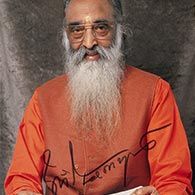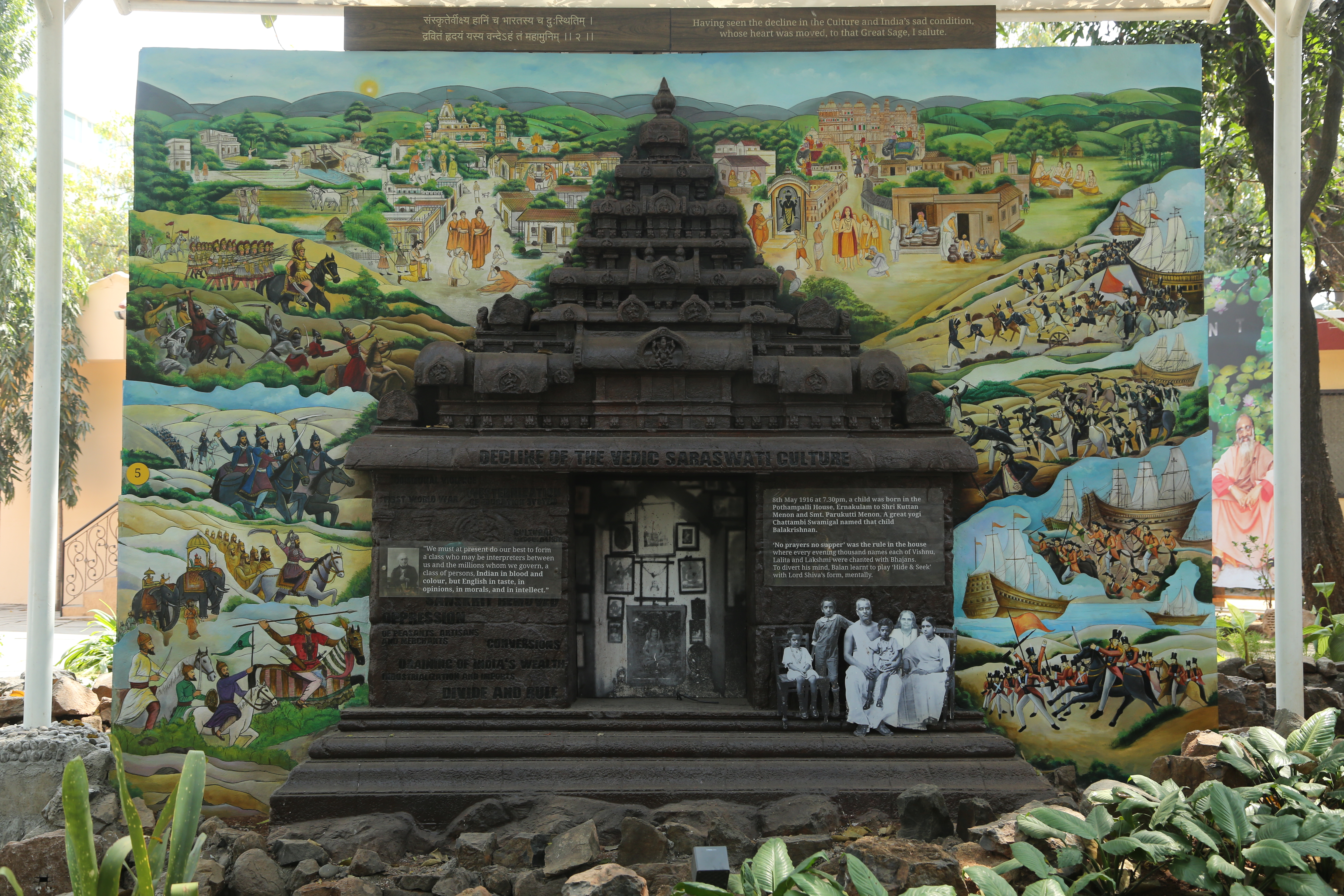Verse 2 of Kritajnataa describes the pain of Swami Chinmayananda while reflecting upon the decline of our glorious Vedic Culture:
Samskrter-Veekshya haanim ca Bhaaratasya ca dusthitim|
Dravitam Hridayam yasya vandeham tam mahaamunim
Having seen the decline in the Culture and India’s sad condition, whose heart was moved, to that Great Sage, I salute.
Why and how did our glorious vedic culture decline?
The Vedic Sarasvati Culture faced threats both from within in the form of cultural corruption and without in the form of invasions by foreign powers
On one hand was a decline in understanding and sharing Vedanta and on the other was the rampant increase of mechanical ritualistic practices, caste system, animal-sacrifices, gender bias, blind beliefs, exploitation by priests, Sectarianism, selfishness, Greed and misinterpretation of Ahimsa. More than two millennia of invasions had supplemented the decline of the once flourishing, advanced and prosperous Vedic Sarasvati Culture. However, the Vedic Hindu Culture survived all this and is a living culture even today.
On both the sides of the temple, the invasions are illustrated in chronological order. On the left are - Alexander, Muhammad Ghazni, Mongolian Timur, Muhammad Bin Tugluq, (and the) Mughals. On the right are - Portuguese, Dutch, French & British.
Prominently, the British invaders had an adverse effect on India. Their ruthless policies of economic and cultural imperialism led to a drain of India’s wealth. Peasants & artisans were oppressed. Thomas Macaulay westernized the education system and sanskrit was removed. There was a rise in communal violence & conversions. Millions of Indians died in the first world war and India’s National Self-esteem was destroyed.
In this atmosphere of slavery and cultural decline, a child was born to Smt.Parukutti & Sri Kuttan Menon on 8th May 1916 at 7.30pm in Pothampalli House, Ernakulam, Kerala, in a highly ritualistic family. A Great Yogi Chattambi Swamigal named him Balakrishnan and blessed him in his childhood. He was a smart, naughty and a fun loving child. Kouchi Narayani Amma brought up Balan lovingly, after the demise of his mother when he was five years old.
No prayers no supper was the rule in Poothampalli House. Fifteen minutes of Bhajans and then the chanting of thousand names each of Vishnu, Lalita and Lakshmi were done daily evening. “It seemed like an unending torture to Balan.
To divert his mind, Balan learnt to play ‘Hide & Seek’ with Lord Shiva’s form, mentally. Unknowingly, he was practicing Meditation on a form, from such a young age. But how was this Vedic Sarasvati Culture before the corruption and invasions? What was its glory? Is the Sarasvati river a fact or is it a myth? To know more, proceed to the display facing the Decline of Vedic Sarasvati Culture.
More Info
Chattambi Swamigal also spent time with Balan when he was a child. Once he told Parukutti Menon, “I have taught him everything.” On another occasion he said - Balakrishnan would be famous but first he will have to suffer greatly.”
In 1921, at the death of his mother, Balan and his two younger sisters Padmini and Kanakam, came under the loving care of Kouchi Narayani Amma, the eldest of the four aunts. Surrounded by siblings and cousins, the joint household provided the foundation of Balan’s happy and carefree childhood. With a happy disposition and a love for reading, the boisterous and mischievous child was the ideal student until grade seven. His sisters recall- “He was a very good, kind brother, but a real tease. There was always lot of hollering and fussing going on when he was around.”
“The Hindu joint family is important to the continuation of our culture; it affords the members all of their needs in whatever crisis.”
“I had everything I wanted in my childhood. I never thought of the future.”
Daily Evening Rituals
Balan and his two sisters had to attend these compulsorily. “It seemed like an unending torture to Balan, not only for my restless little body, but i felt that the goddess herself must be suffering under the weight of the mounting heap of flowers that was presented to her at the recitation o each of the one thousand names”
To divert his mind, Balan learnt to play ‘Hide & Seek’ with Lord Shiva’s form, mentally. Unknowingly, he was practicing Meditation on a form, from such a young age. He would fix his eyes on the form of Lord Shiva. Then, closing his eyes, he would see the Lord exactly as he was in the picture in the darkness within. Inadvertently, he stumbled upon the technique of meditation called upasana. This practice was to endure throughout his life, guiding and influencing him in the most profound manner.
“It was during those days of waiting for the conclusion of the worship service that Swami Chinmayananda was born, in Balan, only a frail child.”
Design Notes
Decline of the Vedic Sarasvati Culture
The layers depict the cultural and political environment within which Young Balan was born. From the top, the first layer shows the decline of the cultural and social values of the Sarasvati culture, through hand painted illustrations. The second layer depicts the chronology of invasions - On the left are - Alexander, Muhammad Ghazni, Mongolian Timur, Muhammad Bin Tugluq, Mughals On the right are - Portuguese, Dutch, French & British A temple represents the culture, spirituality, faith, unity, prosperity of the people and an attack on the temples is symbolic of the attack on these. The third layer is an aged stone temple cast in FRP. The temple surface shows the impact of the British Invasion on India. Within the temple is a recessed niche that represents the temple in Balan’s family home. Through photographic prints and cut-outs, young Balan is shown with his family around it.



